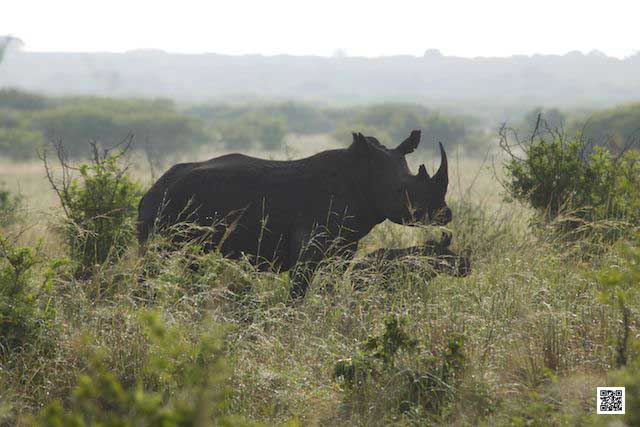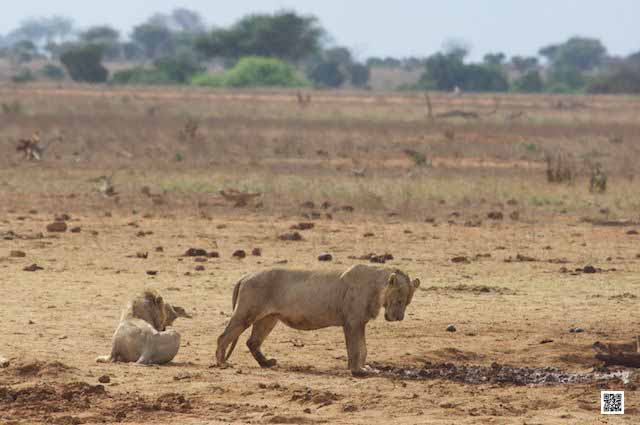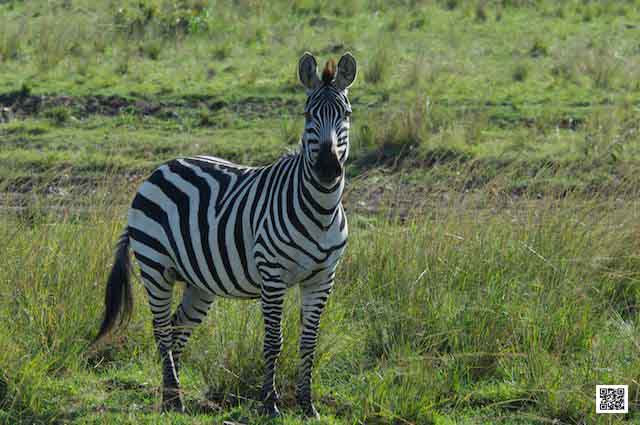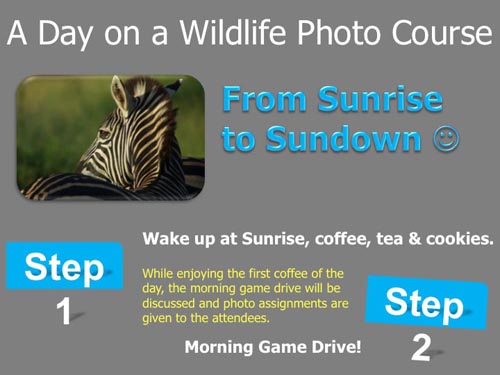wildlife
On Photo Safari: The Path of an Animal
01/06/13 09:03 Filed in: Photographic Safari

When people are going photographic safaris, wildlife photography courses and team building photographic safaris they get sometimes swept away in the excitement of the moment and tend to do not wise things.
There is a standard rule in the bush that you don’t get in the path of an animal. If you have a pet, you will know how it looks like when you cat is on her path to somewhere, only she knows where and how she reacts when you get in her path. This is exactly the same in the bush. As long as you are in a vehicle and you get in the path of a small animal it’s only bad for the animal and you should not do that. We are guests in their environment and should respect them. But if you are in the path of for example an elephant, the elephant will show you exactly what he thinks about that and you will hold your breath when that happens.
Long story short, just keep in mind to stay out of their path. That will not only show respect for the animals it will also result in great sightings, when the animals are showing their natural behavior, interact with each other and you might even witness a kill.
Happy snapping!
Ute Sonnenberg for www.rohoyachui.com
On Photo Safari: Animal Behavior
23/03/13 10:44 Filed in: Photo Safari

Photo safaris are of course for the purpose of seeing animals and photographing them, but that can be challenging at times, when the animals just are who they are and the photographer is too late to capture the action. This can be improved by a faster camera, a better trained photographer, yet more important by the photographer having knowledge about animal behavior.
During photographic safaris with photography courses this is an important part of the course. In order to do wildlife photography one needs to know the animals or at least have somebody on the vehicle who does. For example birds. Photographing a bird’s take off is the moment of capturing motion, beauty and dynamic, yet it happens very fast and the photo is often one of an empty branch or an empty piece of sky. This changes when the photographer knows that a bird ducks down for a moment before it takes off, like a skydiver before jumping out of the plane. Then you only need to start shooting the moment the bird ducks down and you will have the take off.
Another example is lion movement. Lion tend to rest during the day and get active when it cools down in the late afternoon. But it can be very tempting to be impatient and not wait when being at a lion sighting and they are all not moving an inch and it becomes very boring. Stay with them when you see that they start grooming and yawning. This is a clear sign that they will get up soon and that is when the action comes and movement happens.
In case this sounds all new don’t worry. There are rangers on the vehicles who know the animals. Learn from them about animal behavior and your wildlife photography will improve and stress to get it right will subside.
Happy snapping and wildlife watching!
Ute Sonnenberg for www.rohoyachui.com
2012 National Geographic Photo Contest: Cynical?
08/01/13 14:08 Filed in: Photography & Art

Photo awards have proved many times that they are questionable in their motives and results and the just announced winner of the “nature” section of the National Geographic 2012 Photo Contest is only another example how cynical awards have become.
The winning photo is a photo of a tiger, taken in a zoo. One can just imagine what kind of wildlife photography that is in the comfortable security of a zoo with an ice-cream stall conveniently at hand. Not a photographer out in the bush where it has 40 degrees Celsius, covered in dust and sweat, facing possible danger behind every corner and trying to be patient to get that one special shot. No, conveniently with a trolley for the equipment and a foldable chair and umbrella to wait if necessary comfortably for a while, probably being very annoyed by other visitors flocking around the same cage or enclosure.
Is this the new photo safari wildlife photography experience honored by the leading wildlife photography magazine of the world?
I hope not. There is nothing like the real thing and a photo shows that.
Read more on the subject from PetaPixel here.
Ute Sonnenberg for www.rohoyachui.com
Is Google Saving the Rhino?
11/12/12 18:00 Filed in: Insights & Opinion

About 600 rhinos have been killed this year in South Africa alone for the myth of their aphrodisiac powers. There seems to be nothing that can stop it. Expensive anti-poaching programs and high sentences on the captured poachers seem to have little effect. The number of killed rhinos this year is significantly higher than last year and it is not only the dead of the animals that is shocking it’s also the brutal way they get killed, often left behind to bleed to death.
But there might be help from an unexpected source, Google! Google is funding the development of drones that hunt illegal hunters (poachers). The WWF wanted to hunt poachers with this unorthodox “weapon” and it seems to work. The drones are not armed, but they are the eyes in the sky for the ground troops. They were tested in Nepal and are to be implemented in the rest of the world, including Africa.
“Now, wildlife-protecting drones are coming to the rest of the world. Last week, Google announced they would help the WWF purchase African and Asian poacher-seeking UAVs . As part of Google's 2012 Global Impact Awards program, the WWF received $5 million to buy similar unarmed drones to watch and track African wildlife poachers.”
There might be light at the end of the tunnel and rhino poaching can be stopped. It would be such a good and peaceful application combining an initial war device and new economy money.
Seems there is hope and Google is really fighting the evil.
Read the full article by Fast Company here.
Ute Sonnenberg for www.rohoyachui.com
Safari Story: The Loving Brother
10/11/12 14:57 Filed in: Safari Story

Tsavo East is a huge National Park in Kenya with vast bush sections and a big elephant population. We were driving one morning to a waterhole, usually a place with a guarantee so see animals. When were already close to the waterhole we saw no animals at or around it and we looked at each other and had all the same thought, there must be a cat. When a cat is at a waterhole the other animals stay away and yes, there were two male lion drinking. What we didn’t see at first was that one lion looked very ill. He was incredibly skinny and could hardly walk. His brother was also skinny, but not injured and didn’t look ill.
We settled to watch them. It was a heartbreaking morning. The ill brother was obviously suffering a lot, he had difficulties with drinking and seemed very dehydrated. His brother stayed always with him, never left his side. When the sun got stronger they moved a bit away from the waterhole into the shade of a tiny tree. It took the ill lion for ages to walk the 50 meters to the tree. There they rested for a long time before they continued moving into thicker bush to hide from the sun and maybe to find some food. It was so sad to see the ill lion walking very slowly and weak with his brother on his side. It was very moving to see the healthy brother rather dying as well than leaving his brother behind. His ill brother slowed him down and with the weak brother as a “burden” he was obviously not successful with hunting, but he bared with him and stayed.
We watched them as long as we could see them moving into the bushes towards a little river that was running there and we hoped so much that they would bump into small and easy prey to fill their stomachs and to get some strength back.
I don’t know what happened to them, they could have died both or the ill lion could have died or with a miracle they could have survived both. Lets hope for the latter.
Ute Sonnenberg for www.rohoyachui.com
Safari Story: The Comfort of the Herd
03/11/12 20:11 Filed in: Safari Story

We had just started our afternoon game drive in the Masai Mara when we spotted a herd of zebras. They were grazing on an open plain close to the river. Everything seemed completely normal until we got closer and had a better look. We noticed a young zebra lying on the ground and its mother anxiously watching it. It was soon clear that the young zebra was dead. Its neck had a bite mark, we thought maybe from a leopard, but it was strange that it was still lying there. Maybe the leopard got disturbed. The mother was looking at us as if she was asking for help. It was heartbreaking. She tried to make her youngster to get up and follow her and when the little zebra did not move she came back and tried again. It was terrible to watch her pain and not being able to do anything to comfort her.
After a while the herd started moving of the plain towards the river. It looked like they wanted to cross before it got dark. The zebra mother was still standing next to her youngster, still confused and anxious. Then something very beautiful happened. The herd had to pass her and the little one when moving towards the river and every group of the herd that passed stopped for a while and stood with her watching the little zebra. They shared a moment with her, probably also wondering why she was standing there and not coming. Nonetheless the herd comforted the zebra mother and with the final group she was eventually able to move on as well. And we did too, silent and impressed by the care of nature.
Ute Sonnenberg for www.rohoyachui.com
How to make an Infographic

In case you are wondering how people make these awesome infographics you can see on Pinterest and other social media, here are a template, an example and a guide how to do them.

The template is from Hubspot and available here. And a step by step Snapguide can help you to get it easily done.
Enjoy making your own awesome infographics and get your message out.
Ute Sonnenberg for www.rohoyachui.com